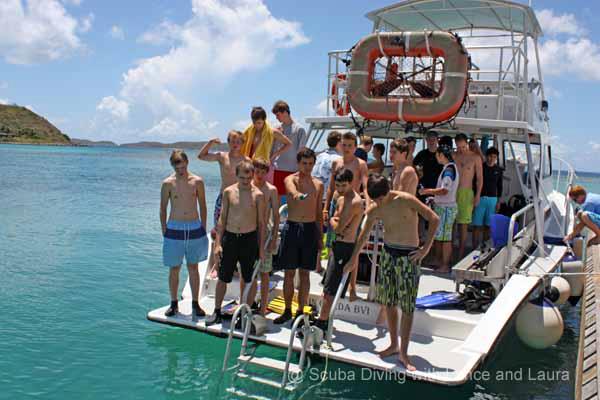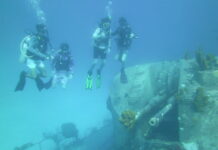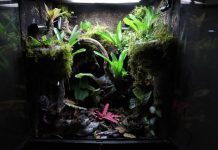I awoke to my arm burning just as it had done the entire night before, due to the constant sting of the terrible, yet small beast they call the jellyfish. Let me explain how I ended up with this undesirable sensation. I recently embarked on a one week trip to the British Virgin Islands with my classmates for the last segment of Jesuit’s marine biology summer school class. During this time we snorkeled, scuba dived, feasted, and learned about marine life, while having the greatest times of our lives.
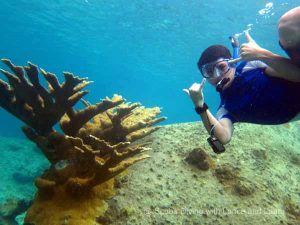 We arrived in Virgin Gorda, our Caribbean place of respite for the next week, in the dead of night after a long day of travel. The teachers and some of the chaperones came to check up on us as soon as we had settled down into the cabins. Dr. Todd Gruninger of the science department, Mr. Ben Kirby, the new assistant principal, and Spanish teacher Mr. Austin Nevitt were just a few of the chaperones who assisted us on the trip. They quickly reviewed the schedule and protocol for the trip.
We arrived in Virgin Gorda, our Caribbean place of respite for the next week, in the dead of night after a long day of travel. The teachers and some of the chaperones came to check up on us as soon as we had settled down into the cabins. Dr. Todd Gruninger of the science department, Mr. Ben Kirby, the new assistant principal, and Spanish teacher Mr. Austin Nevitt were just a few of the chaperones who assisted us on the trip. They quickly reviewed the schedule and protocol for the trip.
“We will be around to wake you up at 8:15 … be down by the cattle guard by 8:30, if you are late there will be points deducted from your grade,” Mr. Kirby called out. After they finished speaking to us, my cabin mates, Chris Wengierski ’14, Luke Curran ’14, and I quickly ate our canned dinner of Chef Boyardee, and went to bed after a long day.
The next day, I woke up to the crowing of roosters that run wild all over the island. I quickly got dressed, ran down to the cattle guard and climbed aboard our taxi, which was more like a truck with bench seating in the back. Our cab driver, Glen, a kind British Virgin Island native, drove us down to a hotel, where we would be having our breakfast and presentations for the next seven days. Once inside, we met our dive instructors and guides for the week. My group’s guide was Laura. Born and raised in Liverpool, England, she naturally greeted us with a big English “‘ello.”
After becoming acquainted with one another, we grabbed our plates, ate breakfast, and began the presentations. Casey, a dive instructor and part owner of Dive BVI (British Virgin Islands), talked to us about scuba diving in the BVI and the other marine biology-related material we’d be going over during the next week. The presentations were interesting, but what I really enjoyed was the breaks in between the presentations, where we got to swim in the pool outside. Soon after the presentations we ate lunch and went to the marina, where my dive group and I climbed aboard our beautiful boat for the week, the Sea Monster. After getting settled and prepping for the dive, we traveled over to Valley Trunk, where we did a safety check and set off scuba diving.
dive instructor and part owner of Dive BVI (British Virgin Islands), talked to us about scuba diving in the BVI and the other marine biology-related material we’d be going over during the next week. The presentations were interesting, but what I really enjoyed was the breaks in between the presentations, where we got to swim in the pool outside. Soon after the presentations we ate lunch and went to the marina, where my dive group and I climbed aboard our beautiful boat for the week, the Sea Monster. After getting settled and prepping for the dive, we traveled over to Valley Trunk, where we did a safety check and set off scuba diving.
It was amazing to dive into the water and start my descent downwards. The bubbles rushing over my face gave me chills; it was spectacular. But ina minute or two we finally hit our desired depth and started swimming. During our dive, we saw a variety of fish and coral, but the most amazing thing we saw was a honeycomb fish. It is a green and yellow fish covered in hexagons. It had to be one of the coolest animals I had ever seen. After a few minutes of gazing and sightseeing, we resurfaced and headed back to the marina. There, we quickly found out that the other boat had killed two lion fish, a foreign species that destroy coral reefs. We decided to dissect and study the lion fish and its stinging barbs, which turned out to be really interesting.
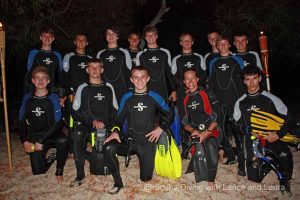 Afterwards we went back to our cabins to prepare for dinner. For dinner we ate at Mad Dogs, a place just up the road from where we were staying. At Mad Dogs, we ate, played games and presented my group’s video that was prepared for the trip. Our presentation went well, and I think everyone enjoyed it. They especially enjoyed the parts where my partners and I stuttered. Those parts were met with roars of laughter, but it was all in good fun. After our presentation we headed back to our cabins to end the night. It was a great way to start off the trip.
Afterwards we went back to our cabins to prepare for dinner. For dinner we ate at Mad Dogs, a place just up the road from where we were staying. At Mad Dogs, we ate, played games and presented my group’s video that was prepared for the trip. Our presentation went well, and I think everyone enjoyed it. They especially enjoyed the parts where my partners and I stuttered. Those parts were met with roars of laughter, but it was all in good fun. After our presentation we headed back to our cabins to end the night. It was a great way to start off the trip.
Looking back, the second day was probably the most eventful of the days of the week. We started the day just as we had done before, except we received a presentation from Mr. Joel Dore, who tracks and studies sea turtles for a living. After the presentation, we headed down to the marina and set sail to tag sea turtles to track their movements.
We jumped off of the boat and went to find a turtle. I did not find one, but I did encounter a magnificent sting ray and beautiful sea urchins, whose treacherous barbs nearly grazed my body. The whole time I was thinking “just keep swimming,” but luckily, nothing bad happened. After a while, we were called back to the boat, for a sea turtle had been caught. Once we were onboard the boat, we examined the sea turtle and identified it. Next, my friend and classmate Luke Curran took on the duty of tagging the sea turtle. He grabbed the pliers-like tool and punched in the metal tag. It was quite a sight. Shortly after we had tagged the turtle we let the little guy go and watched him dart away into the water. “I didn’t know a turtle could swim so fast,” I thought to myself.
That evening we took a short walk down to The Baths. The Baths are a series of caves by the ocean, carved by volcanic magma and toxic gases, where slave merchants would wash slaves before selling them. We finished the walk through The Baths at the beach, where we began our snorkeling trip into the beautiful, yet jellyfish-infested waters. Looking back, I had no idea what I was getting into.
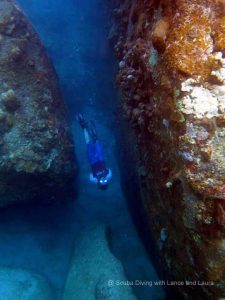 I slowly paddled into the ocean, taking in the amazing sea life. I saw beautiful creatures, such as blue tangs and angle fish playing and nibbling at coral of many colors. I thought to myself, “this is one of the most beautiful things I have ever seen.” But as we kept swimming, I would hear the occasional yelp and yelling of jellyfish! One even grazed my face, but I was lucky enough to avoid it. However, I would not be so lucky the next time. I moved my arm back to take a stroke and then I felt all the tentacles connect on my elbow and I felt the shock run up and down my arm. It was terrible. I just kept thinking, “It will all be over soon.” I had to try to keep swimming, for we were a long way from our destination, and there was not much that could be done. Eventually, we arrived at the beach. I was in excruciating pain so I sat down and tried to relax as best as I could and then made the walk back up to our cabins, where I stayed until dinner.
I slowly paddled into the ocean, taking in the amazing sea life. I saw beautiful creatures, such as blue tangs and angle fish playing and nibbling at coral of many colors. I thought to myself, “this is one of the most beautiful things I have ever seen.” But as we kept swimming, I would hear the occasional yelp and yelling of jellyfish! One even grazed my face, but I was lucky enough to avoid it. However, I would not be so lucky the next time. I moved my arm back to take a stroke and then I felt all the tentacles connect on my elbow and I felt the shock run up and down my arm. It was terrible. I just kept thinking, “It will all be over soon.” I had to try to keep swimming, for we were a long way from our destination, and there was not much that could be done. Eventually, we arrived at the beach. I was in excruciating pain so I sat down and tried to relax as best as I could and then made the walk back up to our cabins, where I stayed until dinner.
I woke up on the third day with a circular, red, puffy scar on my arm that had an accompanying burning pain, reminding me of my troubles from the night before. But it was a new day and a chance to enjoy the rest of the trip. We started off toward a beach on the other side of the island to try to find more sea life to study. After snorkeling for about an hour and a half, we returned to the beach. Our instructors had brought back a wide variety of creatures to study, such as moon jellyfish, sea urchins, and sea stars. This was especially cool because in this setting, we could actually touch and interact with the animals. I enjoyed the moon jellyfish personally, because you could touch them without getting stung and they really felt like jelly.
Then we had lunch and started to throw the frisbee on the beach. We all had a great time, except for Chris. Unfortunately,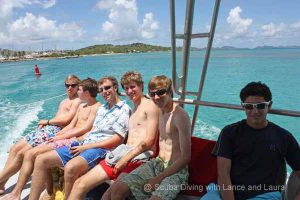 he was added to the list of the many who had been stung by the terrible jellyfish. After an afternoon of snorkeling and relaxing, everyone went to the marina and climbed aboard their vessels and set off to the scuba site they call ‘The Chimney.’ Everyone dove in and saw the amazing colors that covered the reef. “I did not know such colors existed in nature,” I thought when I first saw the brightly colored coral. There where bright purples and pinks and flaming oranges and reds. Seeing the sea fans twirl in the current and beautiful fish interacting with one another was like something one might see on the Discovery Channel. It was purely amazing. But they call it ‘The Chimney’ for a reason. The actual chimney is a narrow, 50 foot long tube of beautiful coral reef. The real trouble for most of the divers is avoiding the fire coral, which can burn as bad as a jellyfish sting. But fortunately, everyone made it out safe and sound, and we all headed back to land for dinner to end the day.
he was added to the list of the many who had been stung by the terrible jellyfish. After an afternoon of snorkeling and relaxing, everyone went to the marina and climbed aboard their vessels and set off to the scuba site they call ‘The Chimney.’ Everyone dove in and saw the amazing colors that covered the reef. “I did not know such colors existed in nature,” I thought when I first saw the brightly colored coral. There where bright purples and pinks and flaming oranges and reds. Seeing the sea fans twirl in the current and beautiful fish interacting with one another was like something one might see on the Discovery Channel. It was purely amazing. But they call it ‘The Chimney’ for a reason. The actual chimney is a narrow, 50 foot long tube of beautiful coral reef. The real trouble for most of the divers is avoiding the fire coral, which can burn as bad as a jellyfish sting. But fortunately, everyone made it out safe and sound, and we all headed back to land for dinner to end the day.
We started the fourth day by eating breakfast on our boats and heading over to the wreck of the Rhone. Before diving, Laura quickly reviewed the history of the Rhone.
“The RMS Rhone was a passenger steam ship that crashed 1867 during a great hurricane. It was protocol for ship stewards during a time of distress to lock all passengers in their cabins and strap all second and third class passengers to their beds. Due to this, only one passenger survived, by escaping through a porthole. Also, the Rhone was only the second ship in the world at the time to have a bronze propeller, making it one of the premiere ships of its day. All of these aspects, including its beauty, make the Rhone one of the most famous ship wrecks in the world today.”
After preparing our gear, we dove in. As soon as I saw the massive size of the ship, I was immediately overcome with amazement. The massive body of the ship is encrusted with a wide array of coral, ranging from elk horn to brain coral. We even got to see the ‘Lucky Porthole,’ from which the one passenger had escaped, and we all rubbed it three times clockwise for good luck, hoping that it might help with the jellyfish. Afterwards, we arrived at the massive bronze propeller. The propeller measures 15 feet in diameter and is one of the most impressive parts of the wreck. It was a great way to end the dive.
After the dive we headed over to Cooper Island, where we ate the greatest fish and chips ever created, presented in little metal plates, as if to say the taste did not express the true culinary magic that danced upon my taste buds. After lunch we were shown around the resort to see all the “green” innovations that had been done, such as solar panels, biodegradable cups, and even comfortable bedding made from shredded plastic. It was very interesting.
Later on, we got back onboard our boats and headed down the coast of the small island for some snorkeling. As always, we saw a large amount of beautiful creatures. I saw a bright red sea star, a squid, a sea turtle, a sting ray, and six barracudas! I was surrounded at one point, but my dive partner and I quickly got our distance. After about an hour and a half, we got back aboard the Sea Monster and headed back to the cabins for the day.
The fifth day was a day to give back to the environment. We started off the day the same as the previous one, eating breakfast at the marina and then heading off to Long Bay. Long Bay’s coral reef was slowly destroyed due to hurricane Katrina and extreme heat. There, we started the first stage of our coral replant project. First, we grabbed our snorkel gear and jumped into the salt water to find some elk horn or stag horn coral to replant. We spotted some pretty cool stuff along the way; we saw moon jelly fish and more squid. We returned to the boat and grabbed our scuba tanks so we could stay underwater long enough to remove parts of healthy coral and replant them elsewhere with a zip tie. My group was the only group to retrieve elk and stag horn coral.
Shortly after the first dive, we ate lunch and started out on the second dive, to replant the coral. In total we replanted about 56 pieces of coral, hoping that would be enough to restore the area. After a quick diving contest off the boats, we headed back to the marina and then to the cabins. We proceeded to eat dinner at Mad Dogs, thus ending the day with food and games.
On the final day we set off to give back to the community, which had given so much to us during our stay. We painted walls and planters by a nearby community center with bright reds, blues, and greens. The people in charge of the repainting effort even gave us a wall to paint a mural to represent Jesuit, to thank us. We painted a Jesuit cross and our initials, and headed back to the cabins. After arriving at the cabins, we went down to our beach for some relaxation and frisbee throwing. It was quite serene. Eventually we headed back up to cabins to get ready for our final dinner with everybody. We arrived at the marina, a fitting place for our last dinner, at about 7:00. We ate, laughed, and remembered all the great times we had had. Dinner was followed by a spectacular slide show put together by Laura. It was a nice way to reminisce about the trip. Soon after we said our ‘thank yous and goodbyes’ and went back to the cabins to pack and get some sleep.
We woke up at 4:00 in the morning to catch our first flight, only to be met by a 13 hour delay at the airport. But a 13 hour delay and a four hour flight later, we were back in Dallas. It was great to be home. But looking back on it, it was one of the highlights of my life. The trip was filled with once in a life time experiences and memories that will last forever. Jellyfish and all, it was one of the greatest experience of my life.


